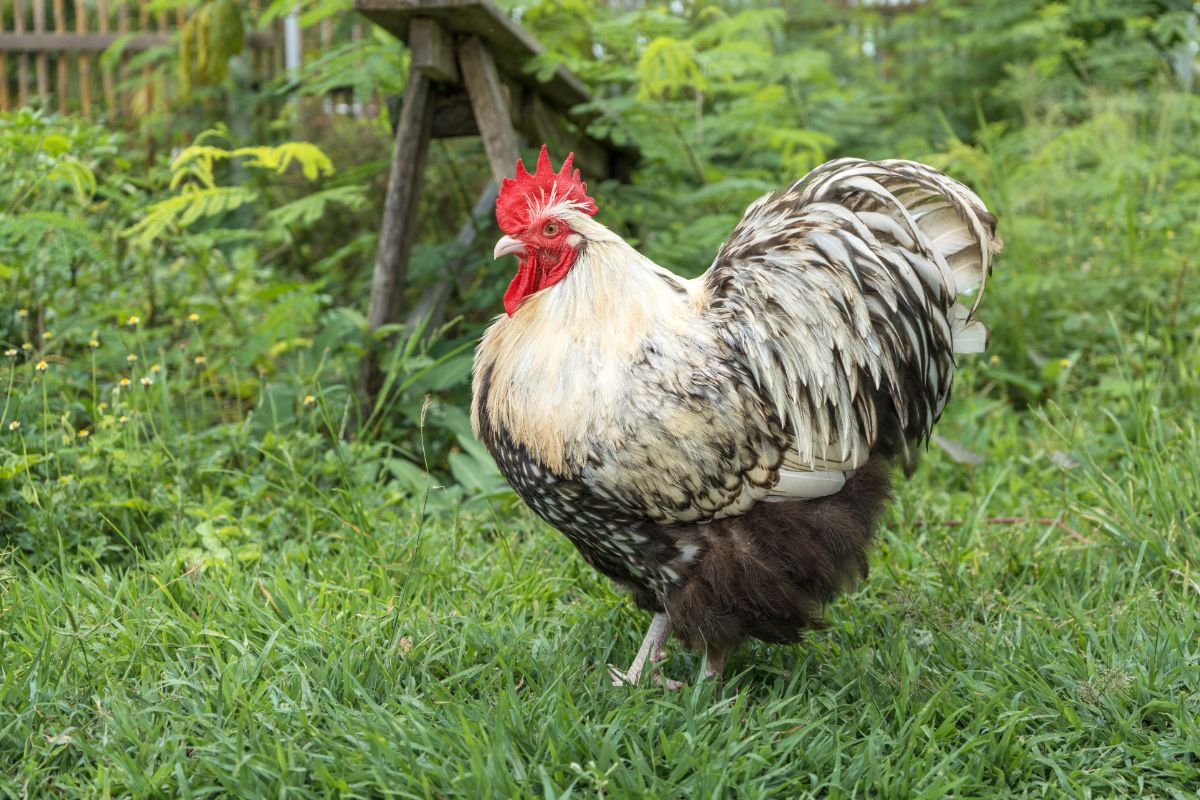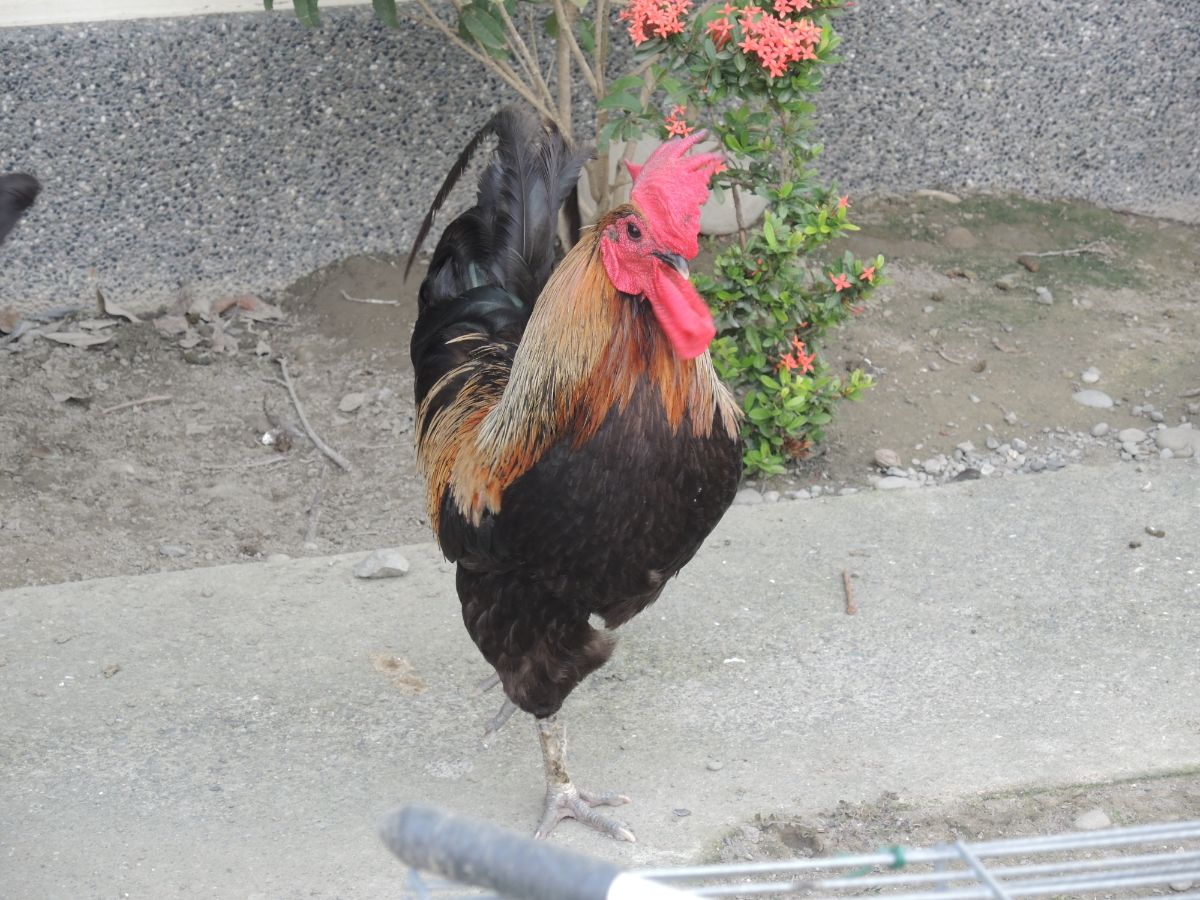
Roosters do molt, yes. Most birds molt, which is the process of shedding old feathers and regrowing new ones.
Seeing feather loss and patchy areas on a chicken, whether it’s a hen or a rooster is often shocking - but molting is a completely natural process.
There are various reasons that can cause a rooster to lose feathers, so you should always investigate if you’re seeing it happen with your own birds.
But the most common cause by far is simply an annual molt.
Jump to:
Why Do Roosters Molt?
Birds’ feathers go through a lot of wear and tear throughout the year. This is especially true for most roosters as they’re active and not afraid to get dirty.
So, once a year roosters and hens will shed all of their old feathers and regrow new ones.
This is called molting.
Molting usually takes place just before winter, so a rooster is able to grow nice new feathers to keep them warm through the winter months.
Most backyard chicken keepers are more familiar with hens molting, as flocks of chickens tend to be exclusively made up of hens, or typically just have one rooster.
The process is the same for both roosters and hens though. Roosters will start to lose feathers, which can happen at varying rates and places over their bodies.
Molting typically follows a sequence starting around the head and neck. Feathers then drop out down their backs working down to their tails, and usually, the breast and legs are last.
Molting is a gradual process, it can take several weeks in total. There is nothing you need to do to help, other than to provide a good quality feed rich in protein.
The end result is a nice new coat of shiny, strong, feathers.
Related - Do hens still lay eggs when they're molting? (Answered)
Do Roosters Molt Every Year?

Chickens have two molts during their first year. This is to shed their chick fuzz and early feathers to help them get a strong adult coat of feathers.
From then on, roosters will typically molt once a year starting around fall.
The first time you see a rooster molting in person, it’s quite the sight. You’ll start seeing loose feathers around on the floor and probably wonder what’s happening.
It’s a perfectly normal process though and nothing to be concerned about. Your rooster might act a bit off during the process, but he’ll be back to 100% in a few weeks.
How Long Does a Rooster Molt?
Molting lasts for around 8 to 12 weeks.
Feathers tend to grow following the same sequence as they dropped out, as pinfeathers effectively push the old feathers out - similar to how our hair grows.
The exact time period can vary depending on the breed of chicken and some of the other environmental factors, so don’t be alarmed if it takes a little longer.
On the other hand, it’s possible that a rooster will not molt in a 12-month period. Again, this shouldn’t be anything to be alarmed about.
Do Roosters Lose Their Tail Feathers?

Roosters should not lose their tail feathers unless they are molting.
It is said that tail feathers fall out a lot easier than feathers elsewhere on a rooster, so it’s possible they caught their tail on something and pulled some out.
There is also the issue of parasites. There are a few types of lice and mites that can infest chickens, and this can cause feather loss.
It’s typically easy to tell the difference between lice or mites, and molting though.
You can see most parasites if you part a chicken's feathers and take a good look. There will usually be evidence of blood loss, and reddening of the skin, etc.
There are also different symptoms that accompany parasite infestations. Your rooster may be agitated, lethargic, and not eating as regularly.
Related - Best high protein foods for molting chickens.
What Does a Chicken Look Like When Molting?
Roosters look a little disheveled and untidy while they’re molting, which is perfectly understandable.
They do not often look bald and have large patches of missing feathers though. If you’ve seen roosters looking like this, there might be a different reason.
The molting process is designed to go as smoothly as possible. As feathers fall out, new ones grow from the same place and molting happens in stages across the rooster.
I’ve even heard from some backyard rooster owners that they barely - if at all - noticed that their rooster was molting.
They did spot all the loose feathers around their yard, of course, and they were able to tell their roo had a nice new coat at the end.
But the process was so seamless that they couldn’t tell during the molt that it was happening.
In Summary
Molting is the process of shedding an old coat of feathers and growing a nice new plumage.
It affects hens more than roosters, as hens will stop laying eggs or lay fewer eggs during the molting period.
Roosters also molt and it affects their mood, too.
Growing new feathers requires a lot of protein, roosters may act a little more lethargic and irritable while going through a molt.





